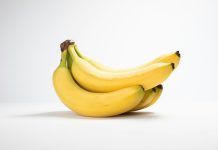
What is the DASH Diet?
If high blood pressure has got you worried, the DASH Diet might be your new best friend. DASH stands for “Dietary Approaches to Stop Hypertension.”
In simple words, it’s a diet plan that can help you manage your blood pressure without medication. The core idea is to eat foods that are low in salt and rich in nutrients that help lower blood pressure like potassium, calcium, and magnesium.
Why Choose DASH for Blood Pressure?
High blood pressure is a big deal—it can lead to heart attacks, strokes, and other serious health problems. The good news is that the DASH Diet is proven to work.
A study funded by the National Institutes of Health showed that people on the DASH Diet lowered their blood pressure within two weeks.
Another study published in the “Journal of the American College of Cardiology” found that this diet significantly reduced blood pressure and cholesterol levels.
How to Get Started
Feeling motivated to get your blood pressure in check? Here’s a quick-start guide:
Step 1: Less Salt, More Flavor
Salt is a major culprit when it comes to high blood pressure. The DASH Diet recommends limiting your salt intake to no more than 2,300 milligrams a day.
That’s about one teaspoon. You can use herbs and spices to add flavor to your food without the salt.
Step 2: Fill Up On Fresh Produce
Fruits and vegetables should become your new go-to snacks. They are low in sodium and rich in the nutrients that help lower blood pressure.
Aim for 4 to 5 servings of fruits and 4 to 5 servings of vegetables each day. Fresh, frozen, or canned—all are good options!
Step 3: Pick the Right Proteins and Grains
When it comes to meat, go for lean options like chicken and fish. Also, aim to include fish in your diet at least twice a week.
For grains, make the shift from white bread and pasta to whole grains like whole-wheat bread, brown rice, and quinoa.
Bonus Tips:
- Dairy: Choose low-fat or skim milk, yogurt, and cheese to get your calcium without the saturated fat.
- Nuts and Legumes: A handful of almonds or walnuts and regular servings of lentils and beans also align well with the DASH principles.
Step 4: Plan and Track
Planning your meals in advance can make it easier to stick to the DASH Diet. There are plenty of DASH-friendly recipes out there, so you won’t get bored.
Tracking your food intake can also help you stay on course and allows you to see the positive changes as they happen.
Before you dive into any new diet, always consult with your healthcare provider, especially if you have other medical conditions.
So, that’s the DASH Diet in a nutshell—a simple, proven approach to help lower your blood pressure and keep it in a healthy range. Isn’t it time you gave it a try?
Follow us on Twitter for more articles about this topic.
Copyright © 2023 Scientific Diet. All rights reserved.








